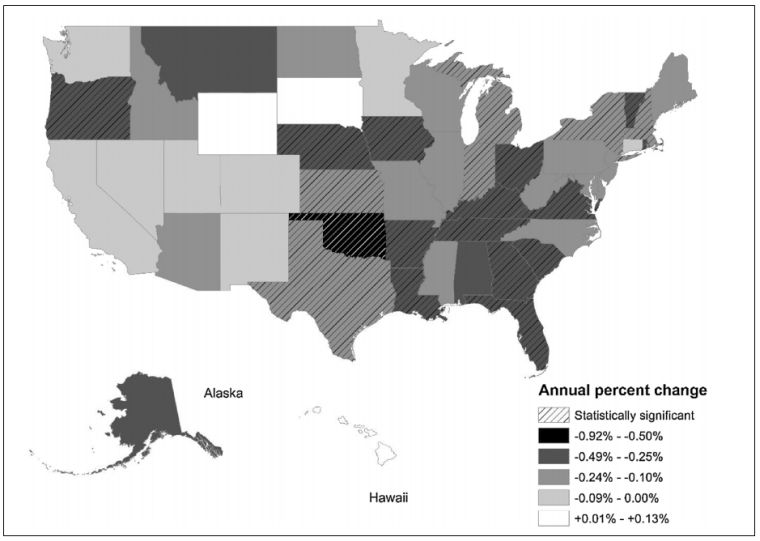“Urban foresters, planners and decision-makers need to understand trends in urban forests so they can develop and maintain sufficient levels of tree cover – and the accompanying forest benefits – for current and future generations of citizens,” stated David Nowak, lead author for research undertaken by US Forest Service
Note to Reader:
Paired aerial photographs were interpreted to assess recent changes (c. 2009–2014) in tree, impervious and other cover types within urban/community and urban land in all 50 United States and the District of Columbia. Overall, for both urban and the broader urban/community areas, 23 states/districts had statistically significant declines in tree cover, 25 states had non-significant decreases or no change in tree cover, and three states showed a non-significant increase in tree cover.

Panoramic view of Central Park from Rockefeller Center (credit: By Martin St-Amant (S23678) – Own work, CC BY-SA 3.0, https://commons.wikimedia.org/w/index.php?curid=6383576)
A Mass Decimation of Forests Is Happening Across The US, And No One’s Paying Attention
A new study May issue of Urban Forestry & Urban Greening has found that US metropolitan areas are losing about 36 million trees every year across the entire country. That’s equivalent to 175,000 acres of tree cover in central, suburban and exurban fringes.
“Just as a growing number of Americans are choosing to live in cities, scientists have begun to discover the importance of living near trees for our health and wellbeing,” wrote Carly Cassella in an article published by Science Alert.
“The problem is obvious, and only made worse when urban forests and green spaces in the US are being decimated at such an alarming rate.
“To give some context, Central Park in New York City is about 840 acres. This means that every year, US cities are losing over 208 Central Parks.”
Research Program & Findings
The research team of David Nowak and his co-author Eric Greenfield fused Google Earth imagery to examine 1,000 randomly chosen points in each of 50 states for a before-and-after comparison over a five-year period, generally ending in 2014 or 2015. They found that tree cover had declined in metropolitan areas across 45 states.
 David Nowak attributes the losses to factors including development to accommodate the expanding urban population, natural aging and death of trees, storms (Hurricane Katrina knocked out a third of the shade trees in New Orleans), insect damage (emerald ash borer has killed thousands of ash trees in Detroit), individual property owners converting forests to lawns or other uses, and fire.
David Nowak attributes the losses to factors including development to accommodate the expanding urban population, natural aging and death of trees, storms (Hurricane Katrina knocked out a third of the shade trees in New Orleans), insect damage (emerald ash borer has killed thousands of ash trees in Detroit), individual property owners converting forests to lawns or other uses, and fire.
The study expands on a 2012 study by the same authors that looked at 20 individual cities, and found 17 of them had experienced significant tree loss.
To Learn More:
To read the complete article, download a copy of A Mass Decimation of Forests Is Happening Across The US, And No One’s Paying Attention


